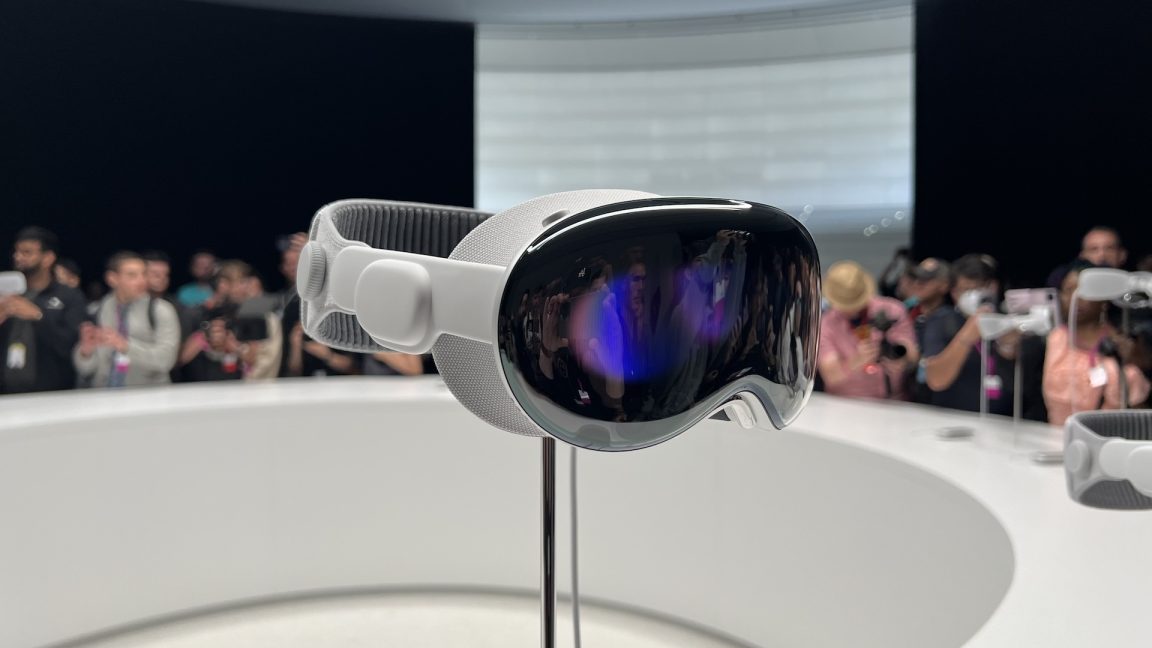
Credit: Samuel Axon
Apple hasn't iterated on its Vision Pro hardware since launching it in early 2024 for $3,499, opting instead to refine the headset with a steady stream of software updates. But Bloomberg's Mark Gurman reports that a new version of the Vision Pro could arrive "as early as this year," with a replacement for the 3-year-old Apple M2 chip and a more comfortable strap.
Gurman says that the updated Vision Pro would ship with Apple's M4 processor, which launched in the iPad Pro last year and has since found its way into new MacBook Pros, MacBook Airs, a new iMac, and a redesigned Mac mini.
Our tests in Apple's other devices (and publicly available benchmark databases like Geekbench's) show the M4 offering roughly 50 percent better multicore CPU performance and 20 or 25 percent better graphics performance than the M2, respectable increases for a device like the Vision Pro that needs to draw high-resolution images with as little latency as possible. Improvements to the chip's video encoding and decoding hardware and image signal processor should also provide small-but-noticeable improvements to the headset's passthrough video feed.
The report also claims that Apple is working on redesigned headbands for the new Vision Pro, to "reduce neck strain and head pain" and make the headset more comfortable to wear for longer periods of time. This update reportedly won't be making major changes to the design of the device itself, so it would probably still come close to the 1.3–1.4-pound weight of the current M2-powered Vision Pro.
The report doesn't mention any pricing plans one way or the other. But it's worth noting that Apple has functionally reduced prices on M4-equipped Macs over the last year and a half, most notably by bumping the minimum amount of RAM from 8GB to 16GB—a cut of a few hundred dollars wouldn't suddenly change the Vision Pro into a mass-market product, but it would be a step in the right direction.
Gurman says that a more radically redesigned version of the Vision Pro could follow in 2027, and that model would be the first to significantly reduce the headset's weight. Apple is also said to be working on a tethered version of the Vision Pro "designed for enterprise applications" and less-obtrusive augmented reality glasses along the lines of Meta's experimental "Orion" headset. The goal would eventually be to superimpose objects directly over a user's line of sight, rather than relying on passthrough videos shot with cameras and displayed on a bulky screen.
Bloomberg's Vision Pro reporting is more-or-less reconcilable with a note published by supply chain analyst Ming-Chi Kuo last month, which predicted a more extensive Vision Pro redesign in 2027 or 2028 but also suggested a milder refresh could ramp up in the second half of 2025 (though Kuo predicted it could use the as-yet-unannounced Apple M5, rather than the M4).
Apple's next major software update for the device, visionOS 26, is due out this fall. Among other changes, the software will be able to play 3D video from non-Apple sources, improve the creepy floating digital avatars that represent you when you join a video call from the headset, add iOS-style widgets for apps, and improve support for external accessories. The general look and feel of visionOS will also propagate throughout the rest of Apple's ecosystem, via the new "Liquid Glass" design aesthetic that's coming to iOS, iPadOS, macOS, watchOS, and tvOS this fall.

-
 C114 Communication Network
C114 Communication Network -
 Communication Home
Communication Home


